Exploding Dots
5.5 (Optional) The Traditional Algorithm
Lesson materials located below the video overview.
Here’s the dots and boxes way to show that \(402 \div 3\) equals \(134\).

This looks nothing like the approach one is usually taught in schools to solve division problems. For example, many schools have students compute \(402 \div 3\) with an algorithm that looks something like this.

At first glance this seems very mysterious, but it is really no different from the dots and boxes method. To see why, let’s first explore an estimation method for division also often taught to students. It goes as follows:
To compute \(402 \div 3\) we need to figure out the number of groups of three we can find in \(402\).
Let’s first make a big guess, say, one hundred groups of three.

How much is left over after taking away one hundred groups of three? Answer: \(102\).
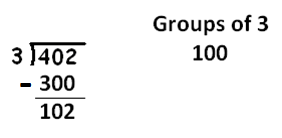
How many groups of three are there in this remaining \(102\)? Let’s guess \(30\).
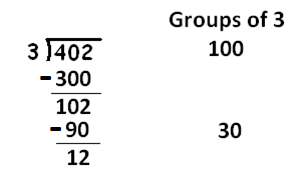
That leaves twelve. And there are four groups of three in twelve.
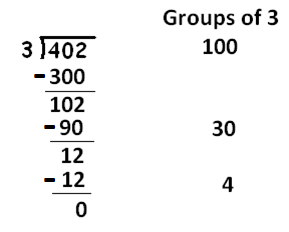
This accounts for the entire count of \(402\). We see that there are \(134\) groups of three in this count.
The dots and boxes method is doing exactly the same work, but purely visually.
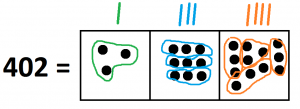
And the table we first presented is also identical to this estimation method. It was invented just to use less ink as it doesn’t write down quite as much. (It skips rewriting some digits.)
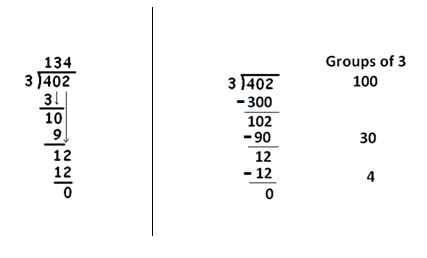
Resources
Books
Take your understanding to the next level with easy to understand books by James Tanton.
BROWSE BOOKS![]()
Guides & Solutions
Dive deeper into key topics through detailed, easy to follow guides and solution sets.
BROWSE GUIDES![]()
Donations
Consider supporting G'Day Math! with a donation, of any amount.
Your support is so much appreciated and enables the continued creation of great course content. Thanks!
Ready to Help?
Donations can be made via PayPal and major credit cards. A PayPal account is not required. Many thanks!
DONATE![]()


